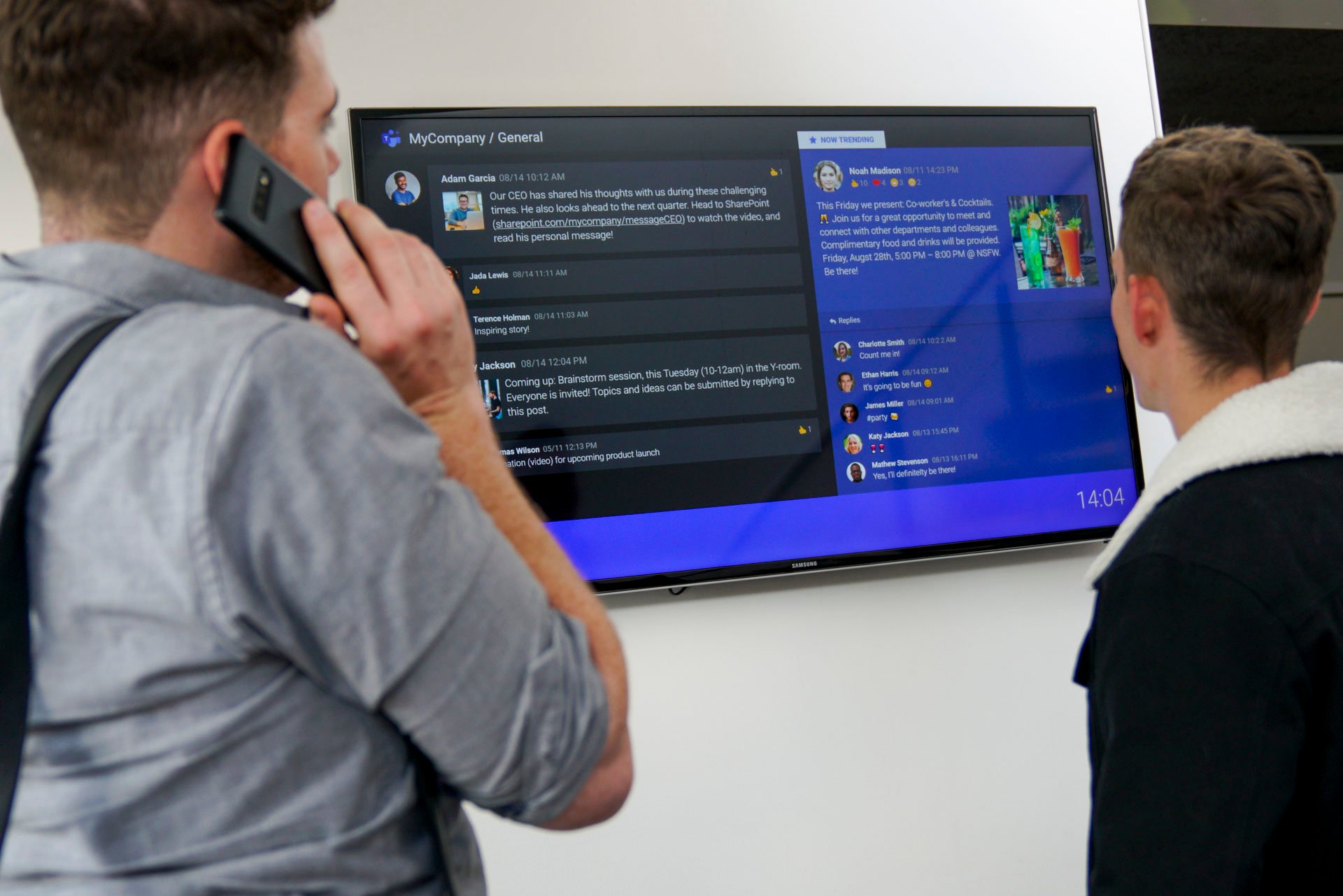Leadership Communication: Why it Matters Most Now (and How to Reach Your Workforce)
Estimated reading time: 7 minutes
By now, your remote workers are probably well accustomed to setting up Zoom calls or collaborating via Microsoft Teams. And while various countries brace for the second wave of the coronavirus pandemic, most workers must prepare to work from home for the near future, and probably for a long while beyond that. As the pandemic lasts, leaders must step up and work with internal communicators to support employees in one of the most disruptive periods of our time. But how does leadership communication reach employees effectively?
Table of contents
During the second wave some countries are entering now, employees rely on their connection with their employer to equip them with direction and the reassurance they still need – employees still face insecurities in many areas of their lives. Leaders can look after their people by defeating uncertainties through clear communication.
Return to the workplace: hybrid organizations
In the first wave of the coronavirus crisis, many countries imposed a lockdown for their citizens. As a result, most organizations went completely remote, and the majority of meetings were set up online – all participants in a meeting were included in a virtual meeting room. However, in between the first and second waves of the coronavirus crisis, organizations have experienced a short-lived break from remote working. Employers had (part of) their workforce slowly return to the office.
Though most employees probably appreciated a change in scenery, this posed a new challenge for organizations. Many organizations were now partially back at their workplace and partially still working from home. This can cause problems around inclusion: we are more likely to give the floor to those being in a physical room.
Make employees feel included
If people do not feel included, in meetings as well as in general, they are inclined to start feeling detached from their colleagues and, worst case, their organization. If this happens, you encounter a risk of disengaged employees. That risk becomes even more significant when employees have been working from home (in isolation). That is a challenge that can be addressed by leaders in collaboration with communication and HR departments. While internal communications are significant in keeping employees informed, senior-level management messages have a real motivational and engaging impact.
Especially when people work from home, a business can swiftly become faceless as employees clear to-do lists by themselves. This makes communication from leaders who provide direction more important than ever. In uncertain times, employees need to feel part of a community. Every worker must feel included. They need to know that leaders are aware of their employees and that their well-being is top-of-mind.
Employees are more than a number. They are more than someone clearing to-do lists in Trello, Jira, or Asana. They have feelings and needs, even while they are at work. And for many people, those feelings have been (partly) negative the last couple of months, as they were dealing with the uncertainties caused by the pandemic.
However, for leaders, this has probably been an uncertain time, too. Sharing these experiences will reassure employees that feeling uncertain and experiencing difficulties is not necessarily negative in the eyes of their organization – and even top leaders are human beings, who may sometimes feel a little lost during the coronavirus crisis.

Raise morale – provide news and updates
Especially in challenging times like this current crisis, communication from senior-level leaders can reduce feelings of anxiety or dissatisfaction. When leaders or managers bring updates or news to their workers, they raise employee satisfaction and boost productivity and spirit. This is specifically crucial for remote or dispersed workers, who encounter higher risks of loneliness and isolation, and may disconnect from their organization easier.
But at this time, when it matters most, how can internal communicators and leaders collaborate to reach their workforce with leadership communication? How can we change our leaders from distant rulers to human beings we can identify and connect with? How can you build a bridge between your workforce and your CEO? How can we let leaders take a reassuring role in these times of uncertainty?
Choosing the right communication channels and tools
Leaders can connect with their workforce by communicating directly. There is an increasing demand for authenticity from leaders and for a single point of truth in organizations. A reliable source of information and reassurance. We build trust and respect for others when we experience there is common ground, and when they are being authentic in how they deal with us.
This means there is no need for long, formal updates by email. Extensive emails are likely only to increase the emotional distance. However, the technology you are probably already using, like Teams or Slack, allows leaders to send out informal messages and talk with employees. In a public channel or team, everyone is free to join the conversation. As if you were having water-cooler chatter! These informal messages are great to connect with all your employees.
Spread your message via multiple channels
However, not all employees use the same digital tools. The platforms used by desk workers will be different from those used by front line workers. Spread your message via multiple communication channels so your employees can choose their preferred channel to consume information. Publish important messages with desktop or smartphone push notifications, so employees are immediately informed there’s a new message from the CEO. This way, they don’t have to spend ages searching for it, and your leadership communication will directly impact organizational morale.
Omnichannel solution
Netpresenter enables you to spread a one-off message instantaneously through multiple channels – so no one is left out. Publish your CEO’s message directly in a Microsoft Teams channel to reach your employees where they are likely already collaborating and chatting with each other daily. Or encourage your senior leaders to blog or vlog regularly, and post it on your SharePoint intranet. Maybe even have them talk about the things they struggle with due to the crisis (hey, working from home with two screaming kids or a hyperactive cat demolishing your precious plants can be pretty challenging!). Showing the boss’ human side breaks down the traditional walls between executive leadership and employees and will create a more cohesive organization.
Whether employees work from home, at the production line, at the office, or maybe even from a different place each day: if you send out your leadership communication through an omnichannel communication platform, you’ll stay in touch with everyone and keep all employees engaged, even during these challenging times.
Would you like to know what we can do for your organization? Contact one of our consultants; they would love to discuss how we can help you lift your leadership communication to a higher level! Download our free infographic with 10 benefits of effective leadership communication.



